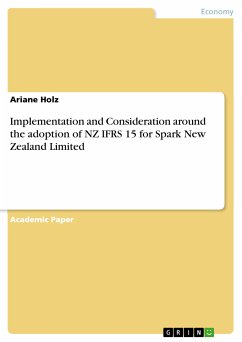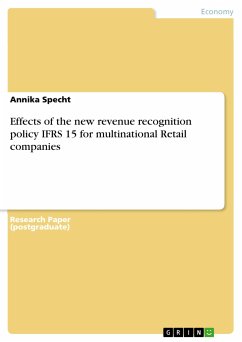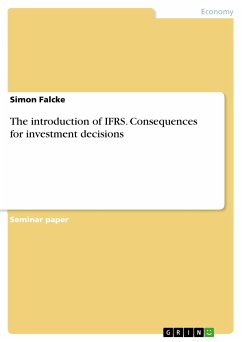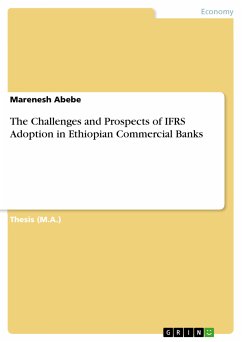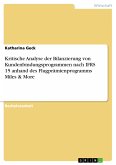Academic Paper from the year 2018 in the subject Business economics - Investment and Finance, grade: A-, University of Auckland (Graduate School of Management), course: BUSMGT 731: Financial Reporting and Accounting, language: English, abstract: This report aims to investigate the impact of NZ IFRS 15 on the telecommunication industry. The main focus will be on Spark Limited, a New Zealand based company that will effectively implement NZ IFRS 15 from the financial year ending 30 June 2019 (Spark New Zealand, 2018). In the wake of this, we will provide some background on the introduction of the standard, the implementation as proposed by the five-step model, the impact on the financial results for Spark, as well as practical business consideration for the retrospective adoption. Spark expects the adoption of the standard to have an effect on its accounting operations, particularly regarding the allocation of transaction prices. To ensure a smooth transition, the company will need to assess its impact and prepare departments and stakeholders for the anticipated changes. In July 2014, the New Zealand Accounting Standards Board published a new standard that introduced significant changes to how companies recognise, measure and disclose revenue in their financial statements. The adoption of NZ IFRS 15 Revenue from Contracts with Customers is fraught with hurdles for telecommunications entities due to the variety of plans they offer and the frequency at which customer make changes to their plans (Ernst & Young, 2015).
Dieser Download kann aus rechtlichen Gründen nur mit Rechnungsadresse in A, B, BG, CY, CZ, D, DK, EW, E, FIN, F, GR, HR, H, IRL, I, LT, L, LR, M, NL, PL, P, R, S, SLO, SK ausgeliefert werden.

